On April 16, 2016 an earthquake, centered just off the coast of Ecuador, jolted the South American nation. Andy Pittman, a retired paramedic who lives in Ecuador, shares his experiences in the days after the earthquake caring for the injured, delivering supplies, and tips for responding to a disaster. Learn more about and support Pittman’s efforts.
By Andy Pittman
I worked in the emergency medical field for 27 years. I started in search and rescue then as an EMT with St. Francis Ambulance Co., paramedic with AMR, Flight For Life, was on two national disaster response teams and ran the disaster program for a 13-state AMR region. I responded to hurricanes, tornados, floods, an airline crash, wildland fires and winter blizzards.
I also ran a wildfire mitigation business on the side for the last six years I was in Colorado. In November 2011, I retired from EMS and moved to Ecuador to start the next chapter of my life. I have been here for four years traveling around the country taking wildlife pictures. My wife, Ginger, and I have also been volunteering at spay and neuter clinics in the Cuenca area.
Ginger and I had just gotten back from a photography trip to the Amazon rain forest on April 16 and had not even fully unpacked. We were in our kitchen fixing dinner when I thought I was getting dizzy. I looked over at Ginger and she was holding on to the kitchen sink and she also thought she was getting dizzy. As the shaking got stronger, we realized it was an earthquake and although it was not horribly strong, it lasted for 30 to 40 seconds so we went outside in case it got stronger.
7.8 magnitude earthquake
It is incredible that we felt the quake that strong for that long as we live nearly 300 miles from the epicenter. At the time, I thought that the Cotopaxi volcano had blown, which has been active since August. The Cotopaxi volcano is a nearly 20,000-foot mountain near the capital of Quito, Ecuador that has a history of a major eruption about every 100 years. It is overdue and with the 30 to 40 earthquakes a day and the eruption of small amounts of smoke and ash, the concern has been that a major eruption is imminent. There is a town of over 100,000 people within the initial blast zone and parts of Quito are also susceptible so there has been a lot of emergency planning to try to prepare for an eruption.
Later that night, we heard that we experienced a 7.8 magnitude earthquake off the Northern Coast of Ecuador.
As the damage and casualty reports came in, I started looking into ways that I could help. As in any disaster, all of the relief agencies were scrambling to put together a response and they did not have time to process new volunteers.
Responding to friends and neighbors
A couple of days later, I talked with my good friend Alexandra and she told me that her brothers lived in Bahia de Caraquez and that their homes had been destroyed in the earthquake, but that one brother’s warehouse had survived so their family and those of some employees were staying there. They were running low on supplies and were down to their last 10 gallons of water with no relief agencies responding to that part of the disaster area yet.
Alexandra’s oldest daughter, Validia, was planning to take some supplies to her family. Alexandra was very worried about her daughter’s safety as there were reports of a lot of violent crime in the area and that a jail had been damaged and 100 convicts had escaped. I offered to help put things together and go with her.
We got donations from friends, my local church and teamed up with the editor of a local magazine who was also collecting supplies. Validia’s boss donated a truck and the municipality supplied a driver. The next day we met with the Cuenca Fire Department and made plans to join their convoy that night and spent the rest of the day buying water, food, generators, medical supplies, toilet paper, diapers and feminine products.
The fire department mission got cancelled so we hired an armed guard and finally left Cuenca at 10:30 p.m. Although I was going with them, Alexandra’s mother instincts were in full swing and she could not stand to see her daughter go without her so she decided to go with us. We left with the driver and guard in the big truck and five of us in the SUV.
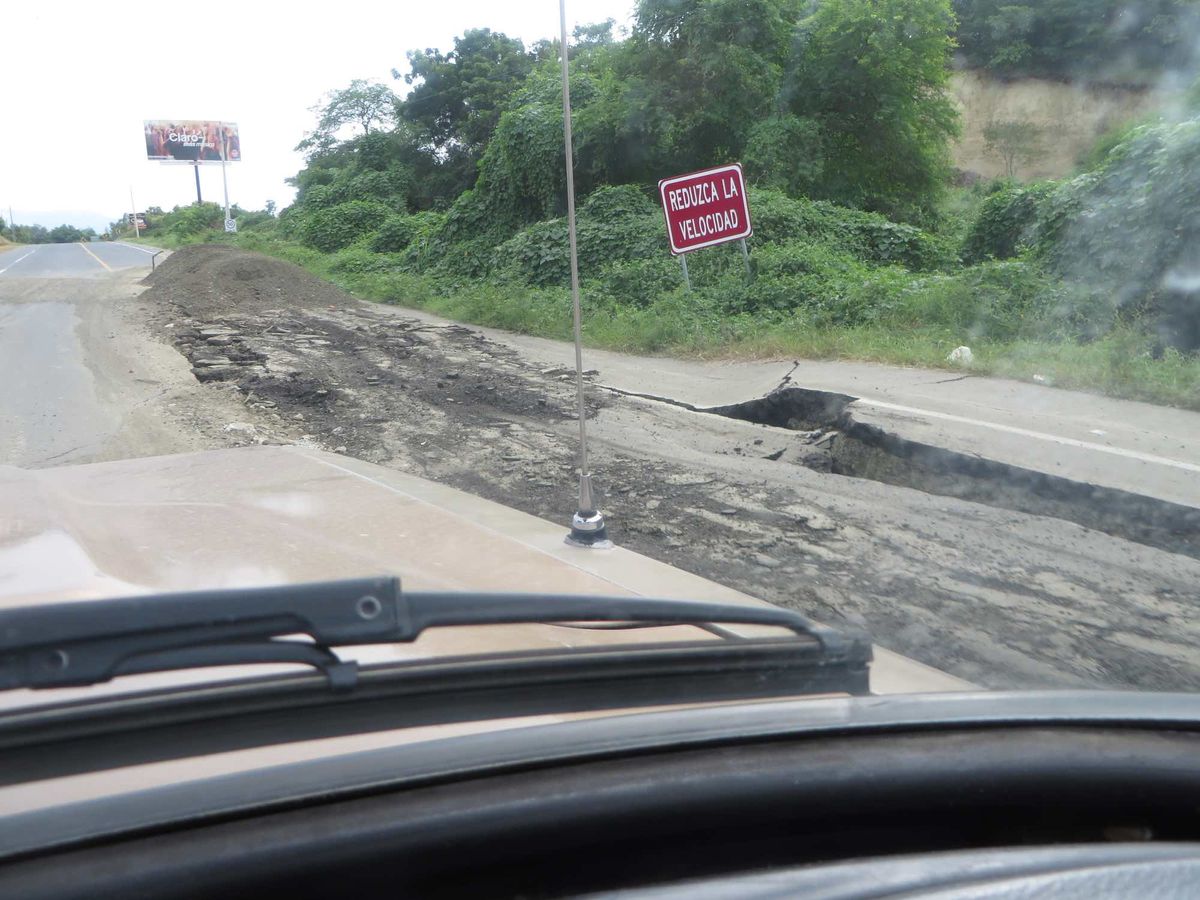
The long drive was made worse by earthquake caused road damage.
We drove through the night and reached Bahia de Caraquez by mid-morning. Alexandra stayed at the compound to start organizing the supplies and her brother took me to the football field where there were supposed to be two American physicians setting up a field hospital. The field hospital tents were being set up but the doctors had moved to another town.
A gentleman approached us and asked if we could help him with his two kids that were having an asthma attack. We could not find a doctor or any asthma medications at the site so I took the medical supplies I had with me and went to evaluate the kids.
The man told us to follow him and he got into a taxi. Imagine my surprise when we headed out of town across the bay bridge. We ended up in San Vicente, which had the only operating pharmacy in the entire area but they did not have any asthma medication.
We followed the gentleman to another compound that had eight families that. Luckily for the kids and me, they were not having any respiratory difficulty.
I spent the next hour and a half evaluating and treating the rest of the families for minor issues related to the quake. The families, all from Canoa, told us that there was no medical help available in Canoa when they left so we headed there to see what we could do to help.
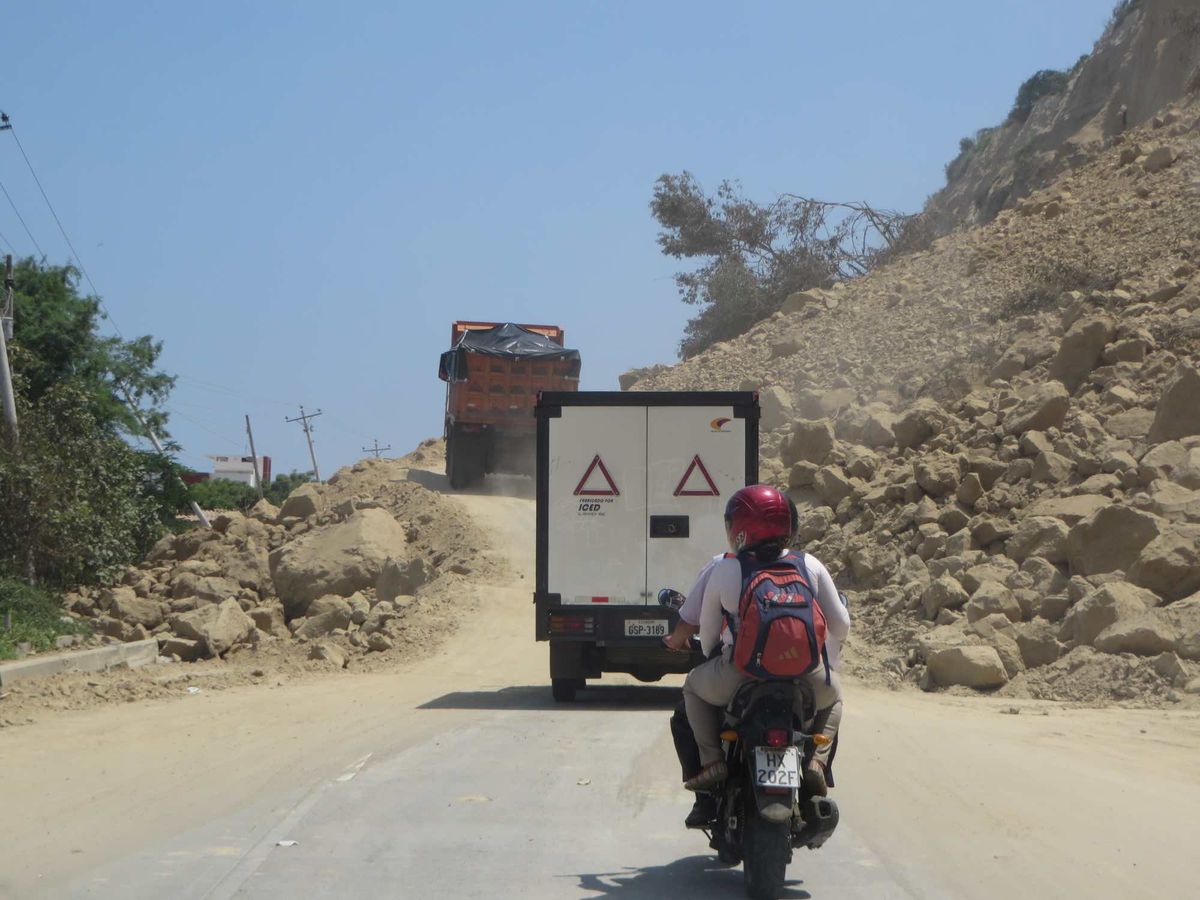
A temporary road was built over as massive landslide that closed the road between San Vicente and Canoa.
The damage in Bahia was severe but nothing compared to the damage in Canoa. We went to a recently set up military compound and talked to the doctor running the medical tent. She wanted all the medications we had brought and for me to stay and work with her. Although the rest of my group was heading back to Cuenca that night, I had brought everything I needed to be self-sufficient for a week with the intention of staying to help.
The military had brought in a significant supply of food and water so we returned to Bahia to distribute the rest of our supplies. When we got back to the Bahia compound, Alexandra had evaluated the needs and capabilities of the community and we left a few supplies with her brother and took the rest to the Catholic Church who had a system in place to distribute them to the people who needed them.
After unloading the food and water, the driver took the large truck and guard and started the long trip back to Cuenca. The rest of our group headed back to Canoa with one generator and the medical supplies.
I unloaded my personal gear at the Hostal Posada de Daniel where the medical personnel had a small area for their tents and returned to the medical tent. Dr. Andrea asked me to work the night shift at the clinic with her that night, but since I had been up since 5:00 the previous morning, I only worked until 6 p.m.
The next morning, as with most mornings, I worked at the clinic from 5:00 a.m. to 9:00 a.m. then returned to the medical tent at the military compound where we helped load food, water and medicine into a convoy of trucks to be distributed to the victims of the earthquake who lived in the rural areas around Canoa.
The convoy consisted of one large truck and five small trucks with local volunteers, representatives from the local villages that we were taking aid to, armed guards from the military, three doctors from Quito and me. We drove east from the coast into the farmland and jungles for about an hour and a half.
We got to the first village and while the volunteers unloaded and distributed the food and water, Dr. Andrad evaluated the children, I evaluated the adults and we sent the people who had medical issues to Dr. Flores and Dr. Hidalgo for treatment.
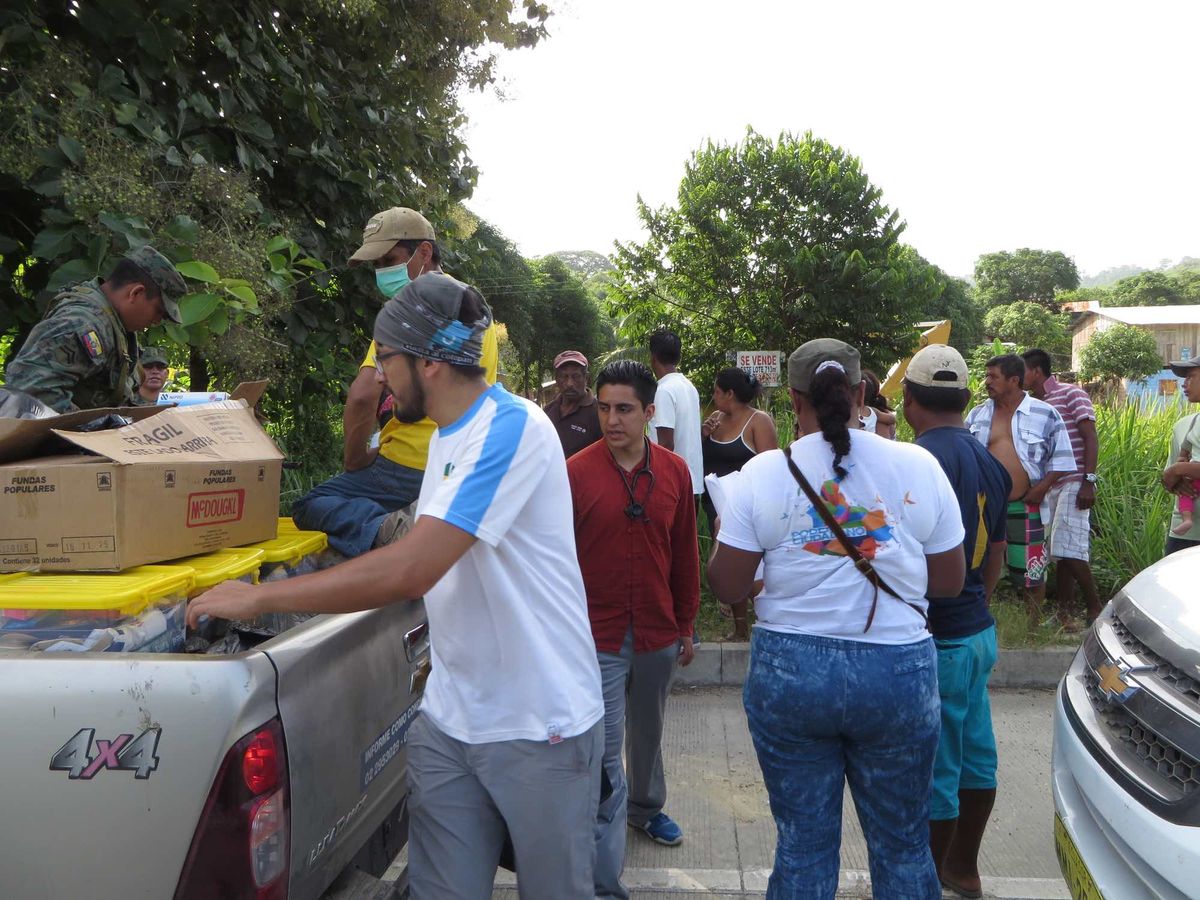
Out delivering food, water and medicine to earthquake victims.
High levels of emotional stress
There were a few injuries from the earthquake however most people fared well because the building construction in the rural areas was wood instead of concrete.
Most of the problems people had were related to emotional stress from the disaster and the inability to get normal medications. We found a lot of people had hypertension from being without meds. Several of the children had upper respiratory issues and almost everyone suffered from dehydration.
People were so grateful for the assistance and it was rewarding to be helping so many people, however it was also heartbreaking to pass up so many people who desperately needed help.
The system was set up to where a local leader brought a list of families from his area to the military compound. They would load supplies for those specific people and those were the only ones we would stop to help. We passed up hundreds of people standing on the side of the roads holding out empty water bottles and begging for help. This was by far the most difficult part of my trip.
As with most of the volunteers at a disaster site, the three doctors had to go back to their practices in Quito. That left only Dr. Andrea and I at the medical tent so she asked me to go on the next mission alone while she stayed at the tent. I was uncomfortable with that arrangement, but the alternative was that there would be no medical help provided for that area so I agreed to go. She made a list for me of common medications that we had been using so people could get refills to their normal medications.
Caring for the injured and the worried well
We were late getting loaded, as we had to wait for a visit from Eucador President Correa. He toured Canoa and did an inspection of the military compound. After his departure, we loaded the trucks and headed out of town.
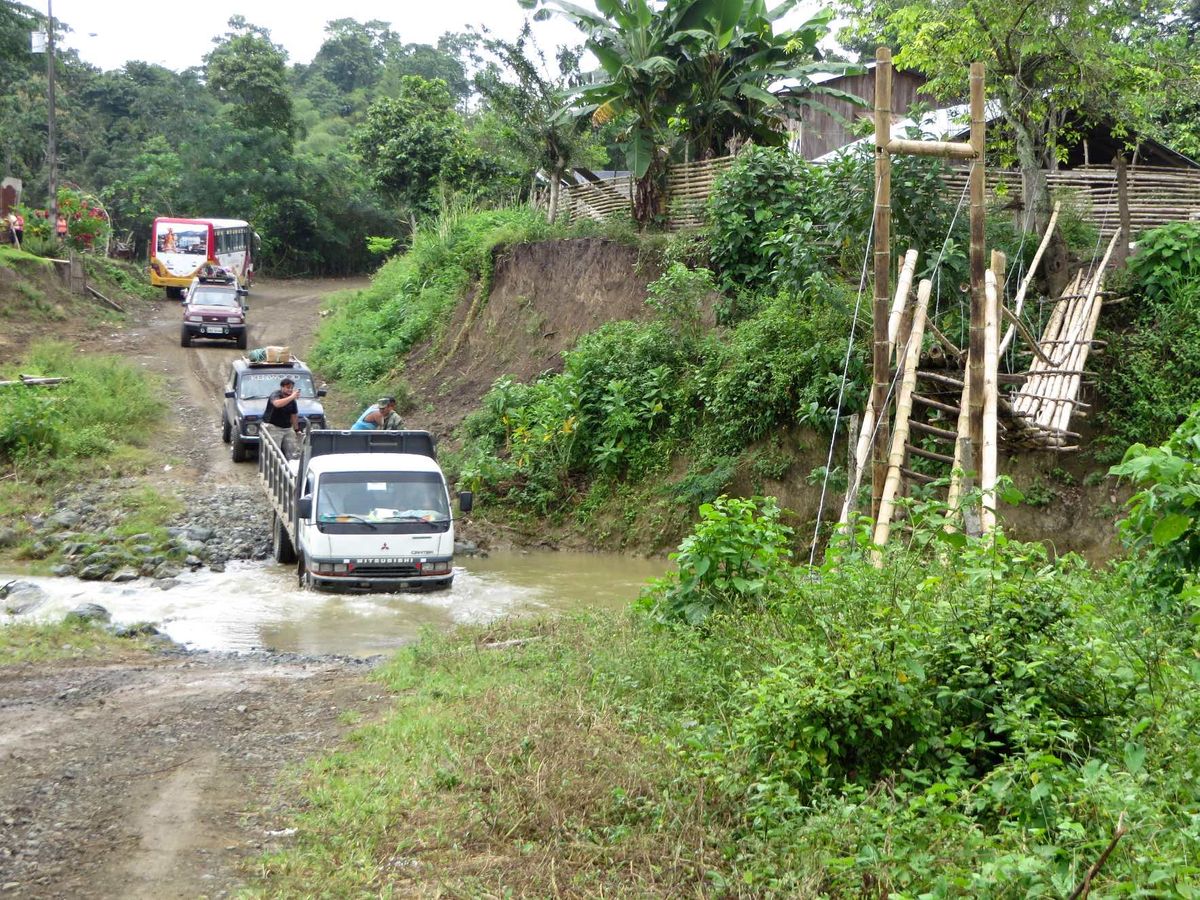
To reach quake victims we had to repeatedly cross a river. Thankfully it had not rained recently.
I evaluated between 150 and 200 people that day and treated 21. It was a very long day, but as with the other days, it was very rewarding.
When we would get to a village, we divided into three groups. The first group was comprised of the community leader, the military who checked IDs to make sure each family only got one box of food and bag of water, and volunteers that handed out the supplies.
I took the group of people who had medical needs or just wanted to be checked out. In areas where there was not a lot of medical need, it went fairly quickly, however if one person wanted their blood pressure taken, then everyone wanted their blood pressure taken. This worked out well in the long run as I identified several hypertensive patients.
The third group of people was mostly children and young mothers along with the occasional town drunk. This group of people, generally the worried well, went with an attorney from Quito, Dr. Dario Portero, who was incredible. He played trivia with his group, giving out prizes for correct answers. He did more for the mental state of those people than I could have thought possible. Everyone had so much fun that they at least for that moment forgot about all their problems.
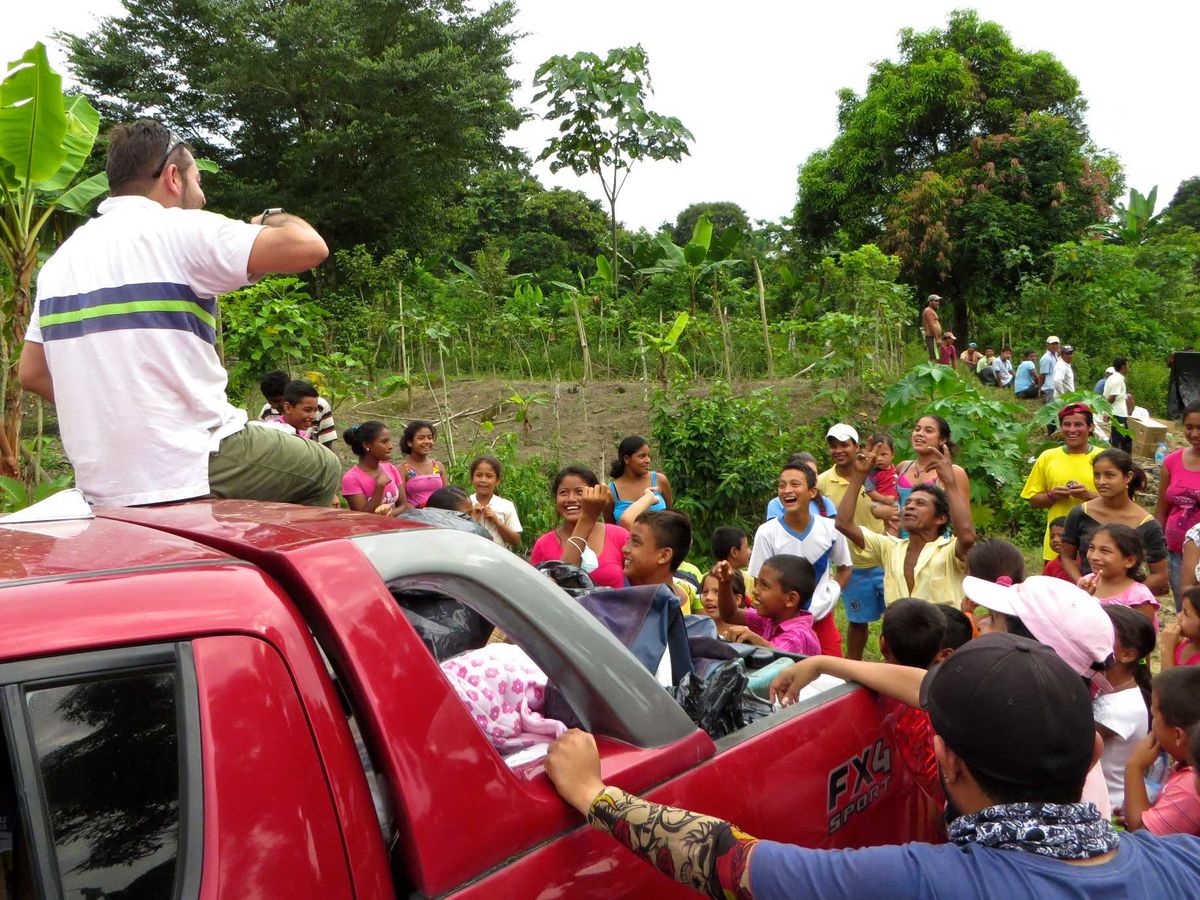
Dr. Dario Portero plays trivia to help cheer up earthquake survivors.
Although the damage to buildings was much less in the rural areas, the earthquake was very devastating. We went to one ranch that had two houses about 100 yards apart with a barn close to the main house. The barn was destroyed and the smaller house sustained major damage. The family members sustained minor trauma.
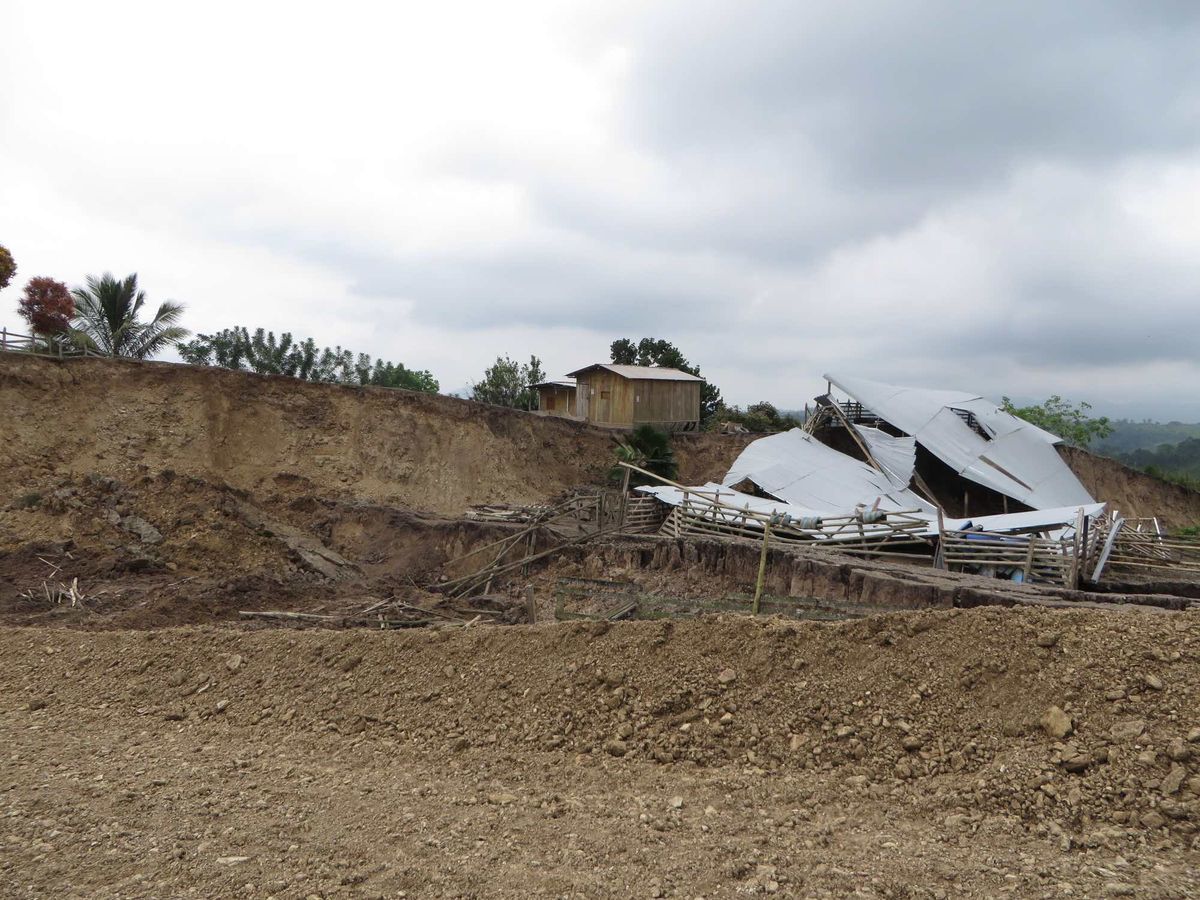
A canyon opened up between the houses.
By the time we finished at the last village for the day, I had been working for almost 14 hours. I know that compared to the 24-hour shifts I used to work and the 12-hour shifts many medics run now where they run call after call without time for bathroom breaks much less meals, this sounds like no big deal, but for a 62-year-old retired medic, I was ready to cry Uncle.
Go to where help is needed
I was relaxing in the back seat of Portero’s vehicle for the long ride back to Canoa when we encountered a motorcycle group. They had been organized by the owner of the Canoa Beach Hotel to go into the rural areas and check for people who needed medical help. They had found a family who had a couple of members that needed help. I moved my medical equipment into the 4X4 of Mateo, a gung ho local young man, to see what we could do.
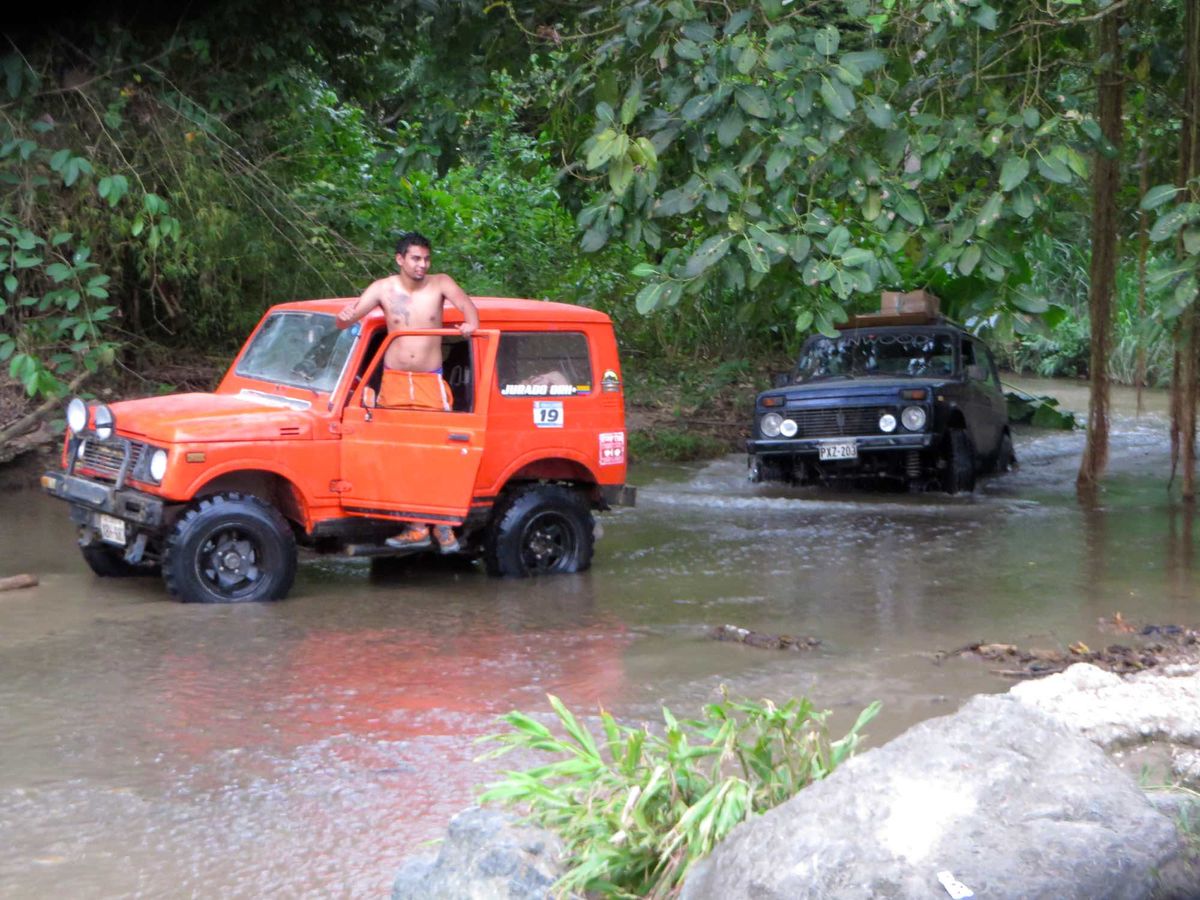
After riding with Mateo I forgot all about being tired and was ready for more.
Mateo was one of many young people who made a big difference. He was a hard worker who really cared and was always going the extra mile by feeding a hungry dog or trying to translate for me when I got stuck with my medical Spanish.
We took care of the sick individuals and finally headed for Canoa. I thought the day would never end when we got about three miles from town and stopped because there was a place that had reception for texting. We spent an hour there and then finally got back to the compound to unload.
Mateo knew how tired I was and he and another volunteer took my meds back to the medical tent for me. I was rewarded for my long day of service with another meal of tuna and crackers and a shower under cold bottles of water. I was pretty sick of tuna by then but the shower felt fantastic.
Importance of self-care
The next morning I slept in and did not go to the clinic. After my breakfast of apples and crackers, I headed over to the military compound to prepare for another trip out of town. When I arrived, the only thing left in the tent was the box of meds we had dropped off the night before.
I went to the clinic and found Dr. Andrea there getting packed up to head home. She told me that shortly after we had left the day before, the military had moved all medical out of their compound and to the clinic. We would no longer be a part of their missions.
I arranged with a local man to put together a truck full of water to give to the people along the road that we had bypassed the day before. I spent the rest of the day helping with recovery efforts moving concrete. I was amazed at the poor quality of the concrete. I would throw a piece of concrete into a pile and it would break. I cleared a path to the bathroom that the medical staff was using and put a couple of pieces of 2-inch thick concrete over a sunken area. When I was carrying 5-gallon water containers to the toilet, I stepped on the concrete and it broke.
Poorly made concrete fails
A local man told me that when they built in this area, they used sand from the beach to make the concrete. The salt in the sand degraded not only the concrete, but also the rebar that was used in it for added strength.
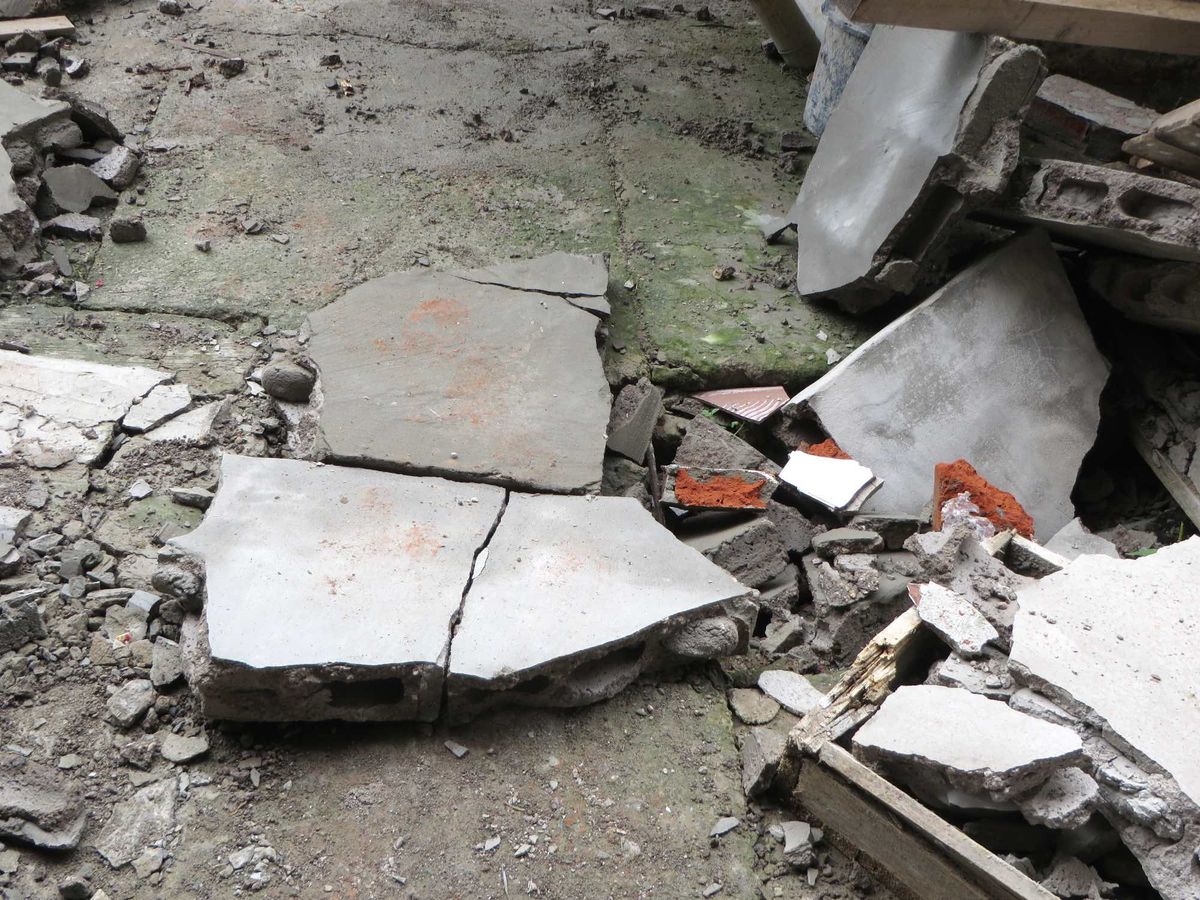
Poorly constructed concrete damaged easily in the quake causing loss of life and injury much greater than wood-constructed buildings.
Everywhere I went there was near total destruction and loss of life from buildings made of concrete. The wood and bamboo buildings sustained much less damage and what damage there was the people in them survived.
Be part of the solution
One of the challenges of helping in a disaster area is to be of some help without becoming part of the problem. It is always a challenge to supply food, water, shelter, communications, laundry, supplies, equipment and sanitary facilities to responders. Some of the larger organizations are set up to provide these services to their members, but smaller organizations and individuals are on their own. It is important to think ahead and bring enough to survive on your own without taking anything from anyone for a week.
In the U.S. we are taught that we need to be self-sufficient for 72 hours and then Federal assistance will likely be on scene. This is not the case overseas. Don’t become part of the problem.
Another important thing to take with you when responding to a disaster is the right frame of mind. Expect discomforts, chaos, plan changes and to work outside of your normal duties and comfort zone. Many medical responders to a disaster area expect to run dramatic rescue calls 16-hours a day. When that does not happen, they sit around depressed and complain about everything.
There are always things that need to be done so when you are not providing medical care, help organize the area, help a victim with cleanup, carry water to toilets, move debris, haul water to victims, or take care of animals that have been affected.
The list of ways to help is endless. You will make such a difference to the victims and other responders.
When I arrived in Canoa, one of the heavily damaged hotels had offered their grounds for the medical staff and ambulance crews to set-up tents. There was a couple of operational toilets that only needed water, a covered bar area, kitchen and lounge chairs available for our use. Some of the responders used these things with respect while others did not seem to realize that we were being taken care of by the very people we were supposed to be helping. Those responders would sit around and throw their trash on the ground, make fires on the grass, leave the chairs out to get rained on and leave the bathroom completely trashed.
The path to the bathroom was covered with collapsed bricks and concrete. What a perfect opportunity to give back. Some of us cleared the rubble from the pathway, hauled water from the pool to the toilets, cleaned up the bar area and got rid of all the trash. An added benefit was that when we got the bar area cleaned up, the police would use it as a place to hang out all night while they were on watch so we felt very safe.
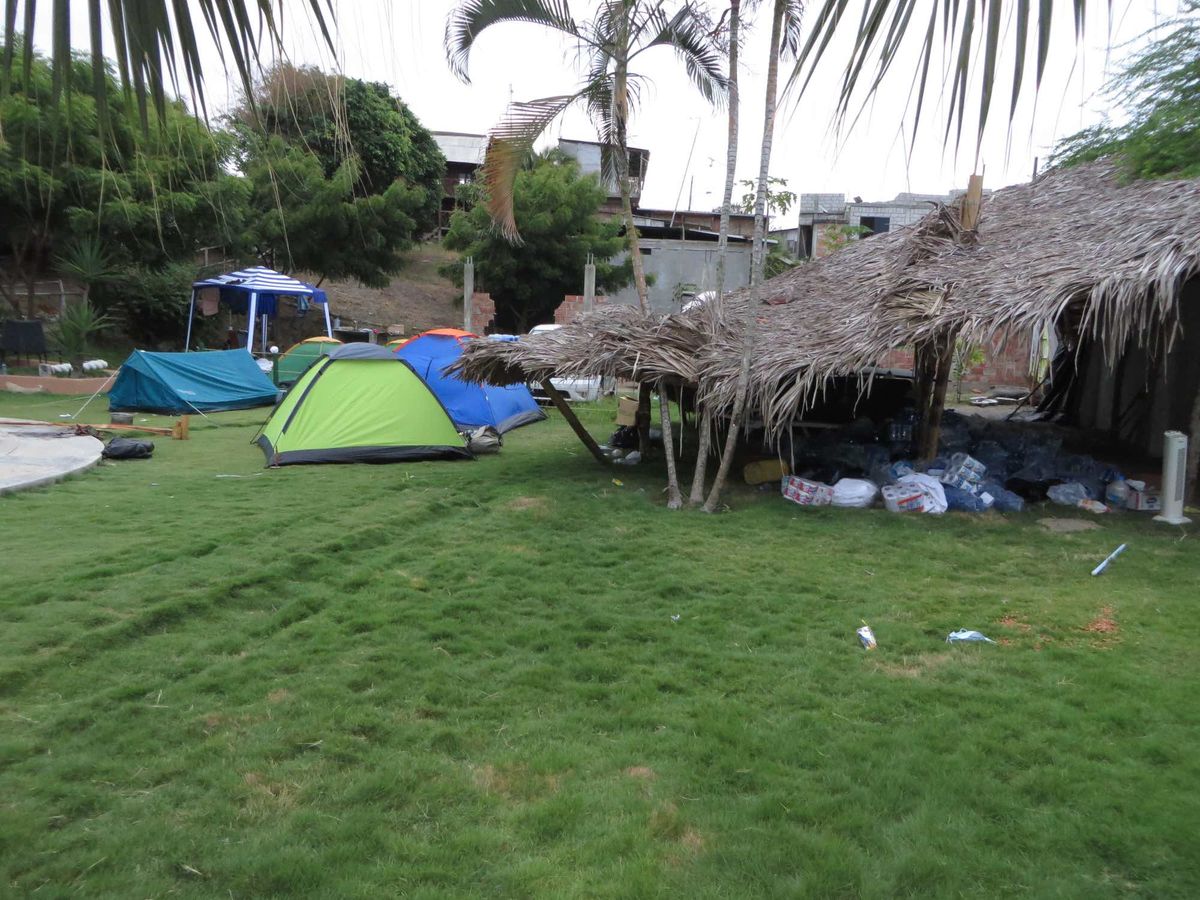
Tent area for medical personnel.
It is also important to take care of yourself. There are times when we must go for a long stretch of time without sleep or food. This can be done for a short period of time but if we continue on that path, we will become inefficient and burned out. Make sure you get enough rest and try to escape from the disaster environment for a short time when possible. On long deployments, a walk on the beach or in a park will often make a world of difference for your state of mind.
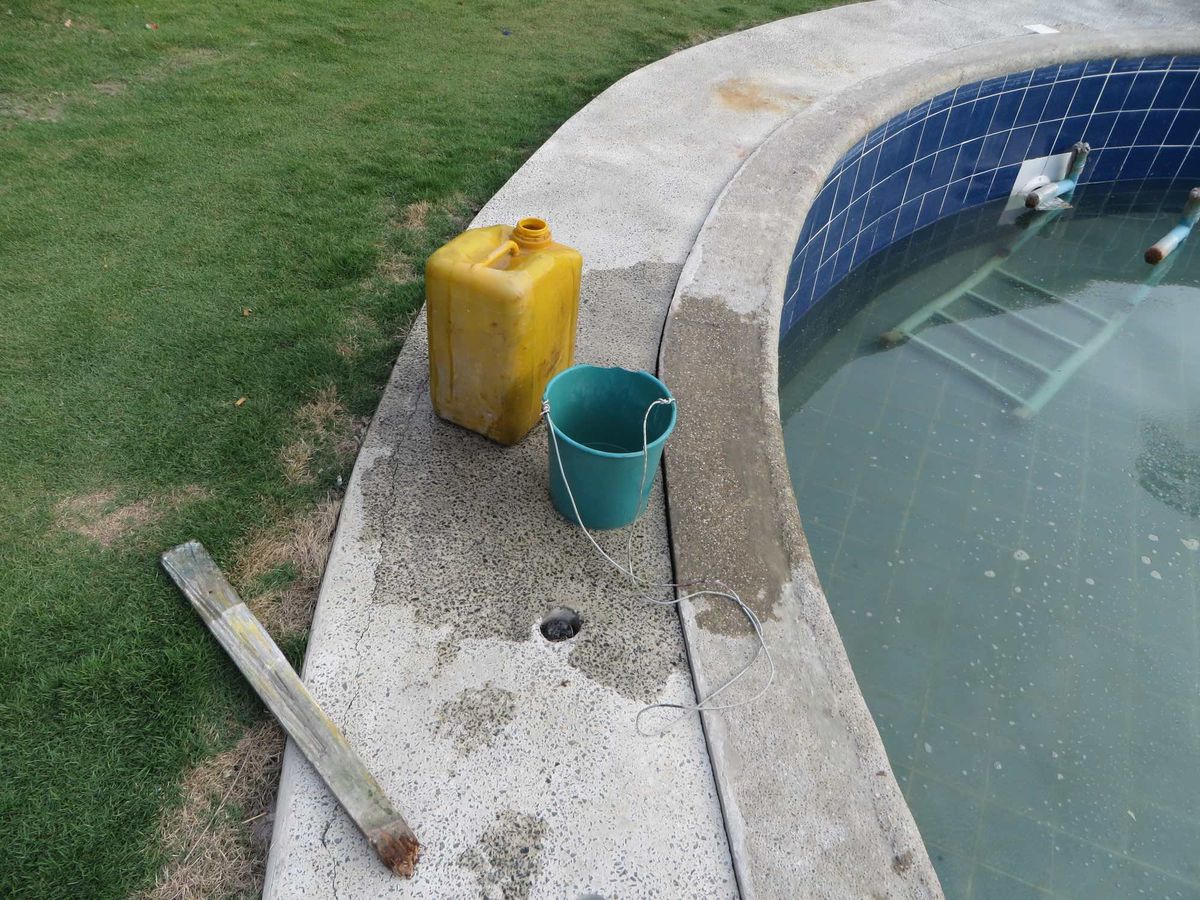
The pool and system we used to get water for the toilets.
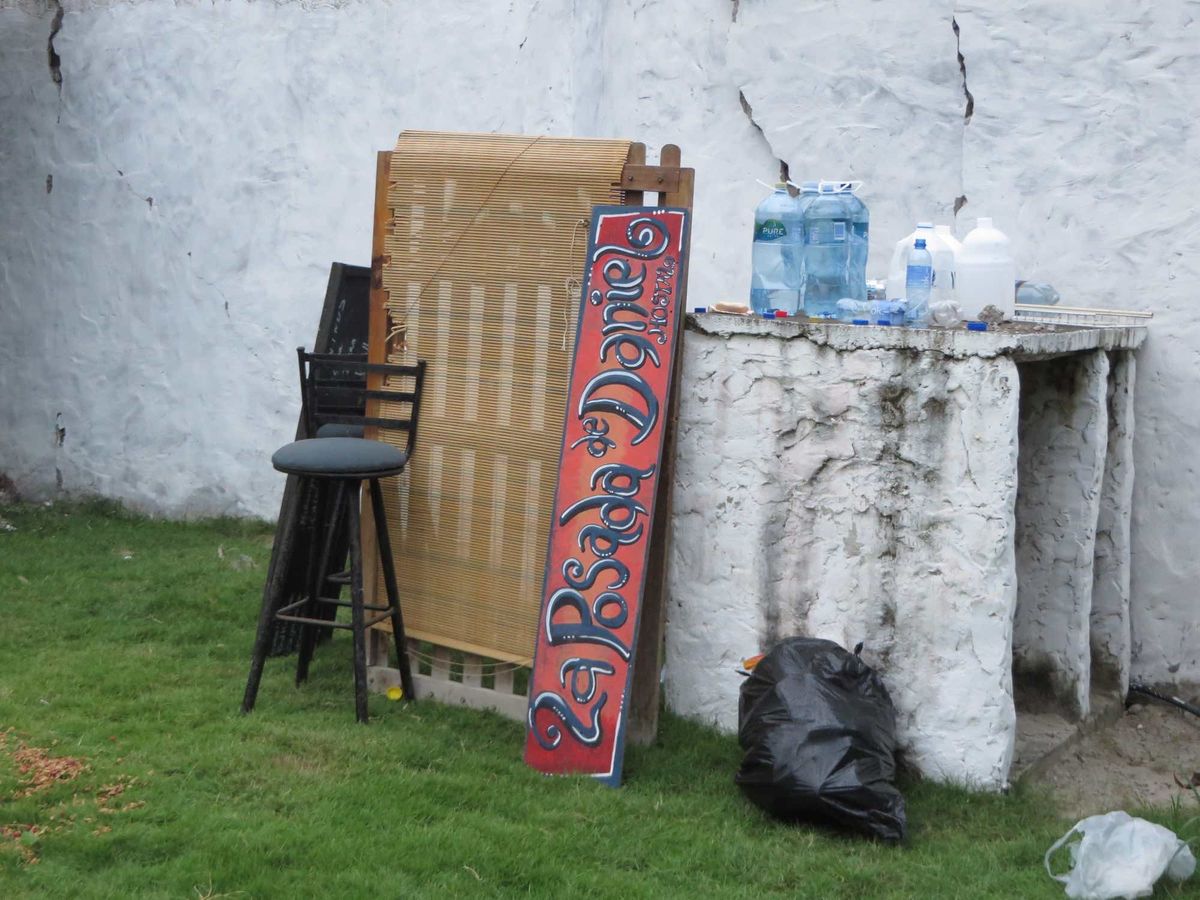
The improvised cold-water shower for medical personnel.
International aid finally reached the Canoa area and there was plenty of medical help in the area. I decided to head home and return in a couple of weeks when those resources started pulling out. I caught a ride to Manta where although the control tower had collapsed in the earthquake, the military side of the airport was still operational. I was able to get on a military flight going to Guayaquil and then got a bus back to Cuenca.











